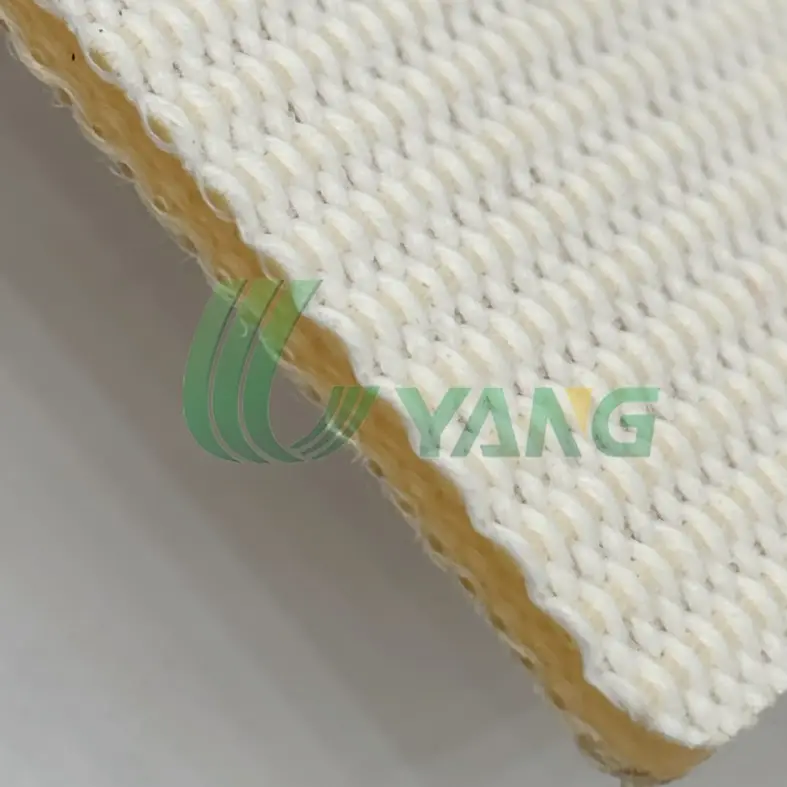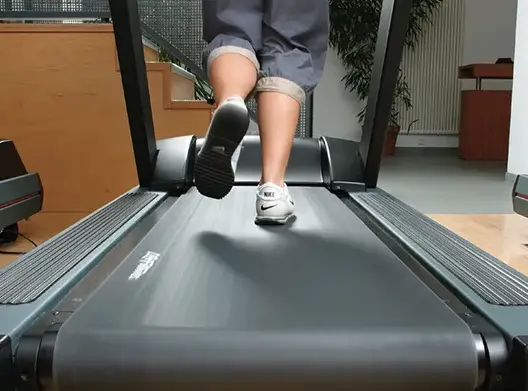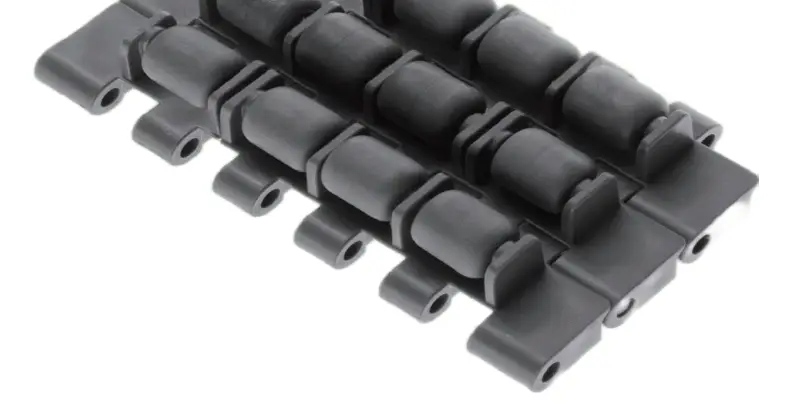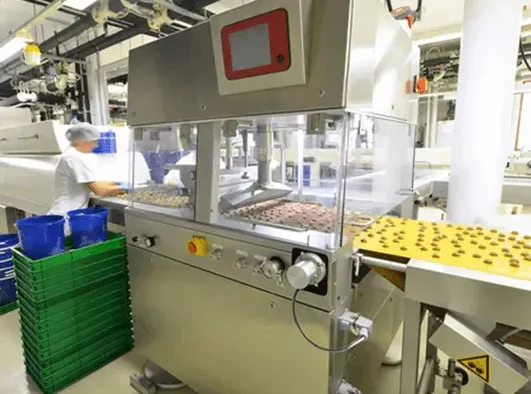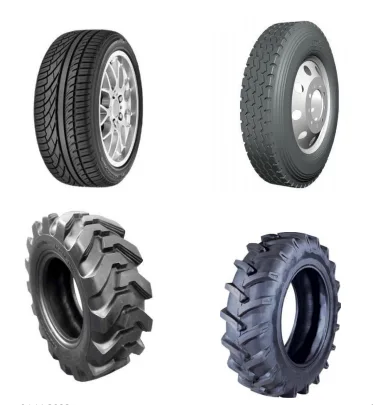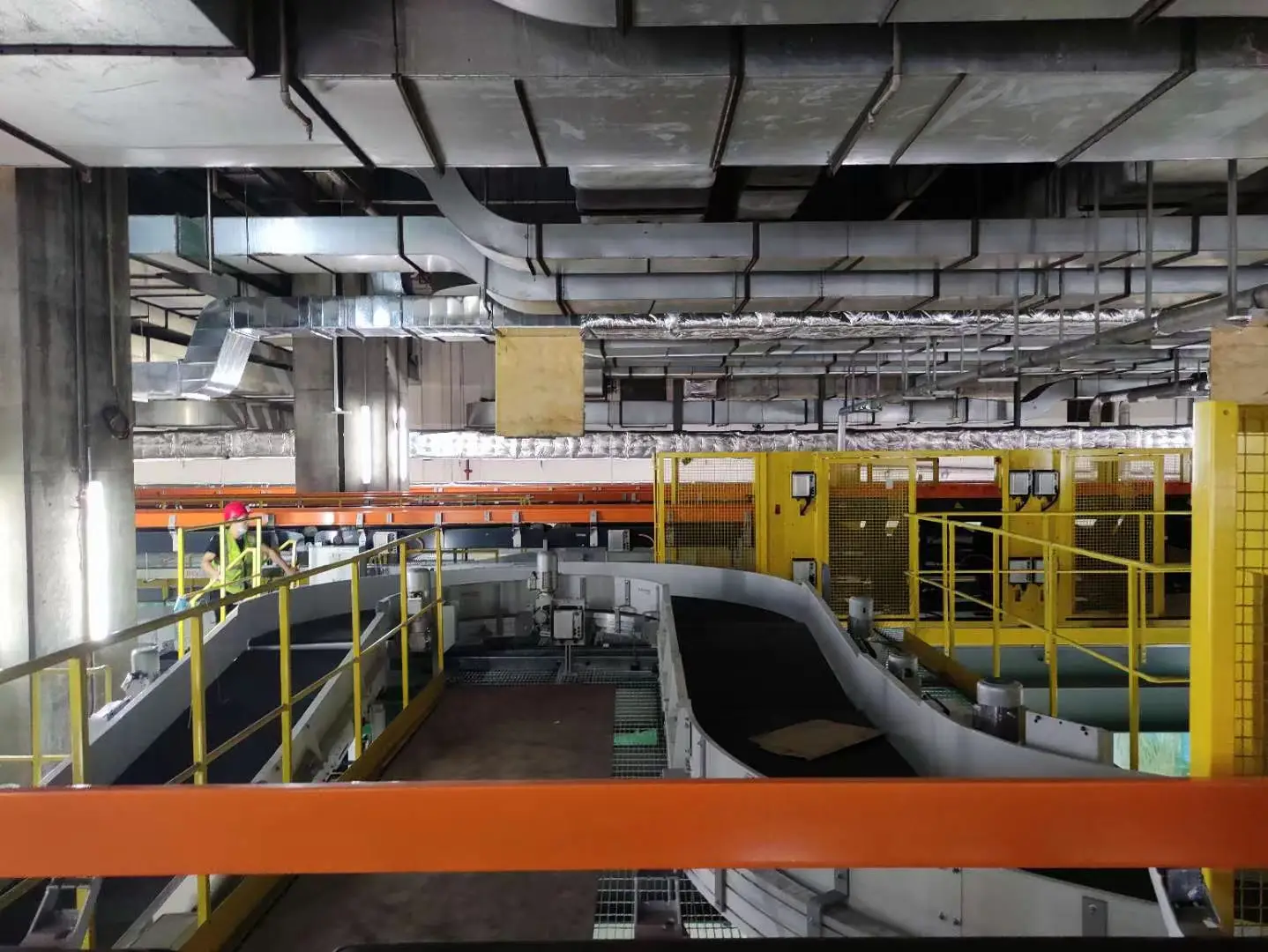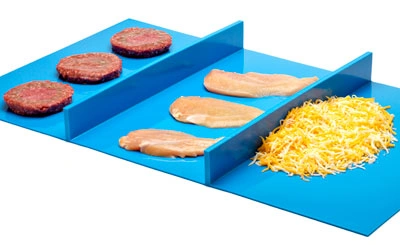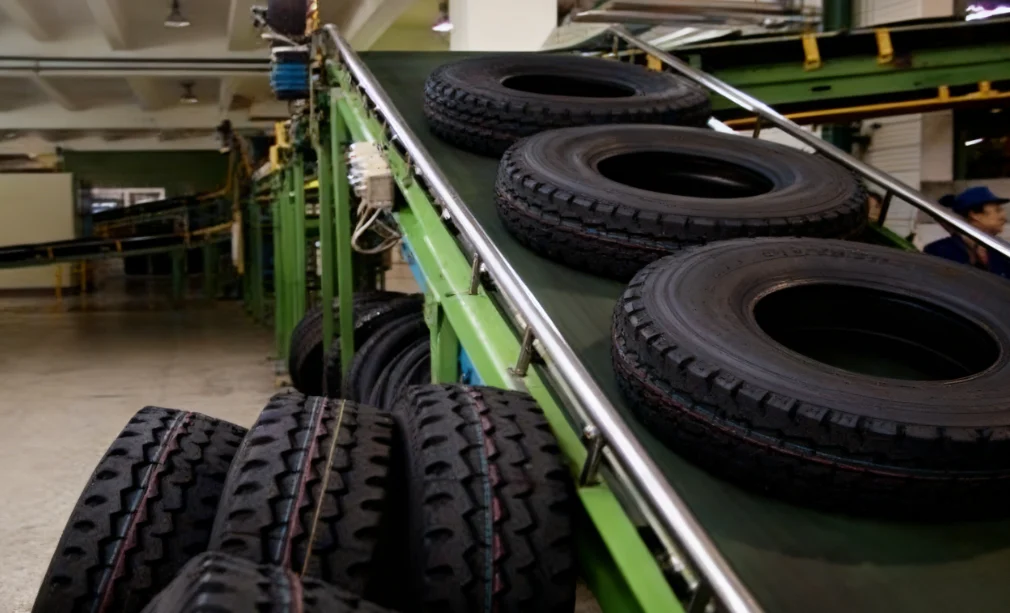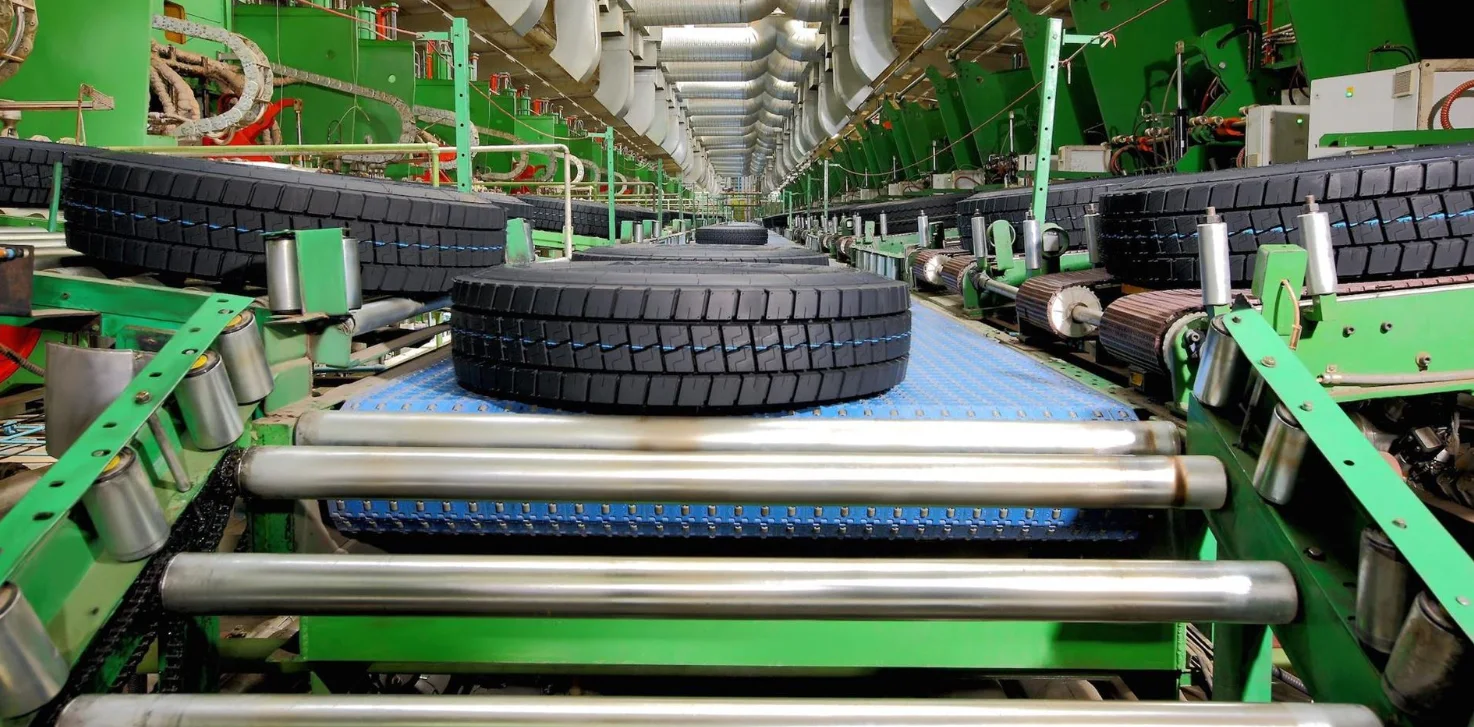Factories that make tires are not what they used to be. Lines are faster, machines talk to each other, and every minute of uptime matters. One quiet but powerful change helping all this happen is the rise of modular smart belts.
Instead of one endless rubber sheet, these systems use small linked pieces that snap together — simple, strong, and smarter than they look. Companies like UYANG BELTING, based in Guangzhou, China, have turned this into their specialty. With more than twenty years of experience, they now build belts that last longer, clean easier, and keep production lines moving when others stop.
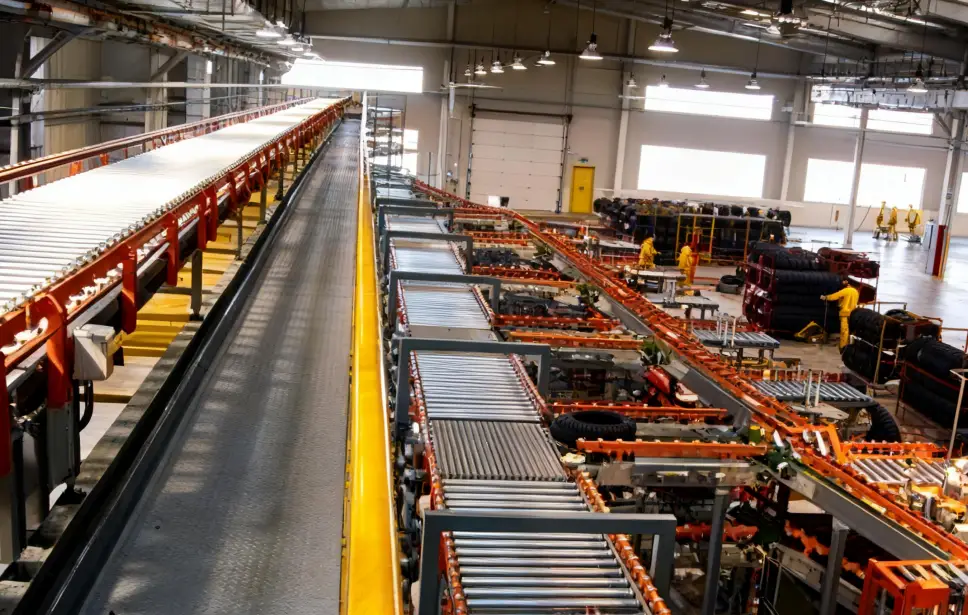
Why Is Efficiency So Critical in Modern Tire Manufacturing?
The global tire business is busier than ever. From electric cars to logistics fleets, demand just keeps going up. Yet profit margins stay tight, so even a small delay can hit hard. For manufacturers, that means one rule: work faster but stay precise.
Traditional conveyors struggle here. Heat, oil, and dust wear them down. Once a belt slips or cracks, the whole system halts — sometimes for hours. Those lost hours add up quickly. That’s why many plants have begun shifting toward modular smart belts built for speed and simplicity.
Increasing Global Demand for High-Performance Tires
Drivers want tires that last longer and perform better. EV makers need lighter options that save energy. So, factories must deliver more with fewer shutdowns. Modular belts help them reach that level by running smoothly day and night without stretching or breaking.
Challenges in Traditional Conveyor Systems
Old rubber or PVC belts have a single weak point: when something goes wrong, you often have to replace the whole thing. They also trap dirt and can warp under heat. UYANG’s modular plastic belts solve this by using replaceable links — a few minutes of repair instead of half a day lost.
Need for Precision and Continuous Operation
Tire production isn’t one simple task. There are dozens of steps — mixing, shaping, cooling, inspecting, curing. If one slows down, everything behind it piles up. Modular systems keep timing steady so materials move like clockwork from one stage to the next.
How Do Modular Smart Belts Differ from Conventional Conveyor Systems?
They may look similar at first, but modular smart belts behave very differently once installed. Think of them as conveyor systems built like puzzles — every piece connected but replaceable. That design gives them flexibility and long-term reliability.
Modular Structure for Easy Maintenance and Customization
Each small section can be removed without cutting or gluing, which makes maintenance quick. If a few links wear out, they’re simply replaced. This matters most in cooling tunnels or film-spray areas where water and heat usually destroy old-style belts. UYANG also lets clients choose the width, surface type, and color to match their factory setup.
Smart Monitoring for Predictive Maintenance
Modern factories need to know what’s happening under the hood — or in this case, under the belt. UYANG’s smart systems can connect sensors that watch for friction, heat, or slippage. When something looks off, the system warns operators early. No more surprise shutdowns; teams fix problems before they grow.
Energy Efficiency and Reduced Downtime
Friction eats power. Because modular belts fit snugly around their sprockets, motors use less energy to move them. The belts also stay cooler and quieter. Many plants have seen around a 5–10% drop in energy use, which means lower bills and less wear on the machines.
What Role Will UYANG BELTING’s Modular Systems Play in Tire Production?
UYANG BELTING doesn’t just make belts — they engineer entire solutions for tire and rubber plants. Their factory, covering about 80,000 square meters with 15 production lines, builds belt systems designed for high temperatures, water, and heavy-duty work.
UY-900 Series for Film Spray and Cooling Lines
The UY-900 Flush Grid and Flat Top belts are built for cooling and spray zones. They’ve got open gaps — up to 43% airflow — so air and water pass through easily. Their temperature range, from −40 °C to +105 °C, means they can handle both freezing and steaming sections without bending or cracking.
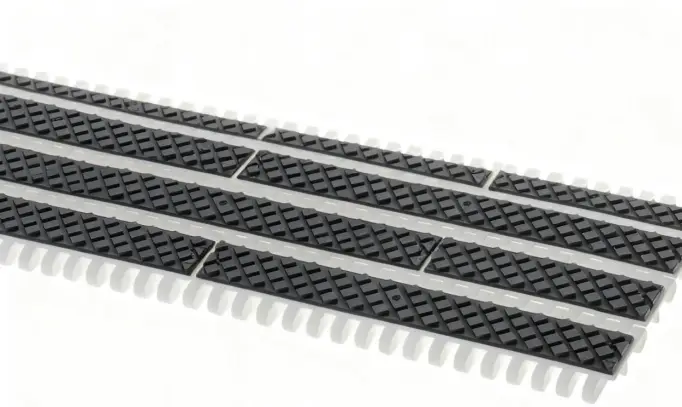
UY-1400 Roller Top for Sorting and Transfer Lines
When tires or rubber sheets move sideways to another line, the UY-1400 Roller Top belt comes in. Small built-in rollers help shift items smoothly and prevent surface marks. It can handle loads up to 36,500 N/m, making it ideal for large or wide materials.
UY-4000 Series for Heavy-Duty Rubber Processing
In the toughest areas, like tread mixing or high-pressure zones, UY-4000 and UY-4400 Series belts stand strong. Reinforced rods give them high strength while keeping flexibility. These belts grip firmly without slipping, which helps robots and conveyors work together more safely.
How Will Smart Integration Improve Productivity on the Production Floor?
Once modular belts are connected to smart systems, the whole production line feels different. Data starts flowing. Machines can respond in real time. Small adjustments happen automatically before they cause problems.
Real-Time Data Tracking and Process Control
Operators can monitor belt tension, temperature, and speed from a single screen. When one part overheats or drifts off balance, alerts appear instantly. Instead of emergency stops, there’s a quick pause, a small tweak, and production continues.
Integration with Robotic and Automated Systems
Many new tire plants now use robots to lift, stack, or sort rubber sheets. Modular belts match perfectly with these robots — smooth surfaces give robotic arms better control. That teamwork means fewer slips, cleaner transfers, and more consistent quality.
Reduced Manual Intervention and Error Rate
Because the belts run steady and need little adjustment, human error drops. Workers spend less time fixing and more time inspecting. It’s a calmer workflow with fewer surprises — exactly what a high-output factory needs.
What Advantages Do UYANG’s Material Technologies Offer?
Inside a tire factory, heat and chemicals never stop. That’s why material science plays such a big role in belt design. UYANG’s engineers focus on polymers that last longer under stress.
High-Temperature and Chemical Resistance
Belts made from POM (polyoxymethylene) and PA (nylon) keep their shape even when things get hot — up to 85 °C. For extreme conditions, PP (polypropylene) handles temperatures up to 105 °C without bending. They also resist cleaning chemicals, oil, and grease that usually eat through standard belts.
POM and PP-Based Belts with Strong Durability
Across UYANG’s main product lines — UY-900, UY-1400, UY-4000 — belt strength reaches around 30,000 N/m while remaining light, about 5–18 kg per square meter. That balance reduces strain on motors and extends system life.
Eco-Friendly and Non-PVC Belt Alternatives
Many companies now care about sustainability. UYANG’s non-PVC belts help lower emissions during production and are easier to recycle later. They’re safer for workers too, producing less odor and residue than older materials.
Why Should Manufacturers Partner with UYANG BELTING?
At the end of the day, factories want stability and service they can count on. UYANG BELTING brings both — proven reliability and a practical, hands-on approach.
Over 20 Years of Technical Experience
With two decades of real-world experience, UYANG has seen every problem a conveyor can face. That knowledge shapes how their belts are designed and tested — not in theory, but in production halls that run nonstop.
Global Service Network and Tailored Designs
The company’s belts are used worldwide, supported by local engineers and quick response teams. Custom widths, pitches, and sprocket types can be made to fit almost any setup. That makes upgrades simple, even for older machinery.
Proven Results in Tire and Rubber Applications
Factories using UYANG systems report fewer stoppages, cleaner work areas, and smoother flow. Over time, that reliability pays off. Once installed, these belts just keep going — a quiet partner in a noisy business.
Conclusion
By 2025, modular smart belts won’t just be an upgrade; they’ll be part of every serious tire plant. The combination of strong materials, easy maintenance, and smart integration is rewriting how factories handle rubber.
UYANG BELTING stands right at that crossroads — bringing field-tested experience and dependable technology to help manufacturers cut downtime and keep moving forward.
FAQs
Q1: Why are modular belts better than traditional PVC belts?
A: They clean easier, last longer under heat, and can be repaired link by link without removing the whole line — saving time and money.
Q2: Can UYANG belts work in curing or cooling tunnels?
A: Yes. Belts such as UY-900 and UY-4000 operate safely from −40 °C to +105 °C, ideal for both hot and cold sections.
Q3: Does UYANG BELTING make custom designs?
A: Absolutely. The company creates belts with special widths, surfaces, or sprockets to fit each client’s machines and layout.

